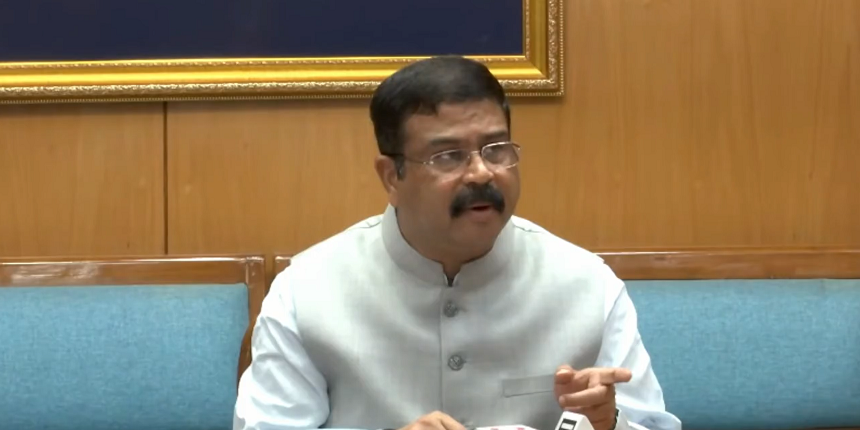National Credit Framework is next-generation global instrument: Dharmendra Pradhan
Vagisha Kaushik | October 19, 2022 | 06:11 PM IST | 2 mins read
Union education minister Dharmendra Pradhan today marked the start of public consultation on the NCrF. The draft will be hosted at mygov.in.

NEW DELHI: Union education minister Dharmendra Pradhan today marked the start of public consultation on the National Credit Framework (NCrF). The draft will be hosted on the official portal -- mygov.in -- for public consultation till one month. The ministry of education is planning to introduce NCrF from Class 5 to PhD. The credit framework will consider both academic and extracurricular activities like sports, yoga and music for assessment.
Listing down the salient features of NCrF, Nirmaljeet Singh Kalsi, the chairman of National Council for Vocational Education and Training (NCVET) said that multiple entry and exit have been accounted for in the framework. Credits earned by students in school will also be included and stored in the Academic Bank of Credit (ABC), he said. All co-curricular activities, skilling, project work, internships, experiential learning and the exams will add to the credits of students. NCVET drafted the NCrF in consulation with the Indian Institutes of Technology (IITs), Indian Institutes of Management (IIMs), universities and other institutions.
Also Read | Centre plans to roll out ‘National Credit Framework’ from Class 5 to PhD
The framework will include an "outcome based assessment" and will have 1,200 hours of notional learning hours. Pradhan informed that Class 5 is credit level 1. There will be a "single meta framework" that will cover all qualifications. He also said that special assessment methods will be formulated and followed for activities like hackathon.
According to the government, benefits of NCrF to students include:
- Creditisation of all learning hours, including academic, vocational and experimental learning including relevant experience and professional levels acquired.
- Multidisciplinary and holistic education with flexibility curricula
- Flexibility in duration of study/courses through provisions of multiple entry and exit/ work option
- Provision for lifelong learning - anytime anywhere learning
- Removal of hard distinction between education and stream thereby making study choices respectful and allowing for more than one award in same period.
- Removes distinction between arts, science, social sciences and commerce etc. Students will get credits for every academic, skill, or experience.
- Enhances the scope of core learning to include foundational and cognitive both.
Also Read | What is a course credit system and how are credits earned, transferred? A beginner’s guide
Further, benefits for higher education institutions are:
- NCrF promotes unification of HEIs to promote multidisciplinary education
- More diversified and rich student’s knowledge database
- Promotes stronger collaboration between institutions
- Simpler and uniform credit mechanism
- Increased focus on research and innovation
- Promotes digital learning, blended learning, and open distance learning
- Leveraging of institutional infrastructure
In the case of industries, the framework will help re-skilling and upskilling existing employees and allow students attain industry-developed skills to make them more employable.
Follow us for the latest education news on colleges and universities, admission, courses, exams, research, education policies, study abroad and more..
To get in touch, write to us at news@careers360.com.
Next Story
]DU Admission 2022 Live: Delhi University UG first seat allocation list released at admission.uod.ac.in; cutoff
DU Merit List 2022 Live: Delhi University has released the DU first merit list at du.ac.in, ugadmission.uod.ac.in. Know all the latest updates and details about the DU admission process, seat allotment, cut off, cuet, top colleges here.
Team Careers360